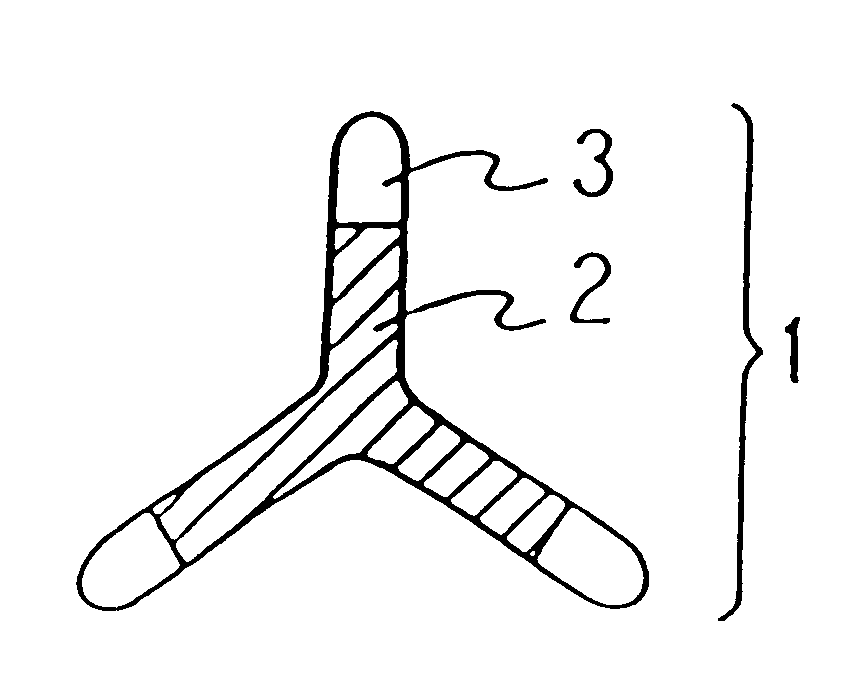Non-woven fabric and an absorbent article using thereof
a non-woven fabric and absorbent material technology, applied in the field of non-woven fabric and absorbent material, can solve the problems of increased manufacturing cost, lack of bulkiness, and complicated manufacturing steps, and achieve enhanced non-woven fabric strength, enhanced softness, and excellent hand feeling
- Summary
- Abstract
- Description
- Claims
- Application Information
AI Technical Summary
Benefits of technology
Problems solved by technology
Method used
Image
Examples
example 2
The non-woven fabric was obtained in the same way as Example 1 except that an air through method (hot air circulating method at 130.degree. C.) was applied for thermal adhesion between filaments.
The obtained non-woven fabric had a splitting ratio of 70% and a bulkiness of 30 cc / g in specific volume, exhibiting an excellent hand feeling. Moreover, as is apparent from Table 1, the non-woven fabric of the present invention exhibited an excellent property when used as an absorbent article.
example 3
The non-woven fabric was obtained by the same way as Example 1 except that a water jet (pressure was 70 kg / cm2) was used as the splitting method.
The obtained non-woven fabric had a splitting ratio of 80% and a bulkiness of 20 cc / g in specific volume, exhibiting an excellent hand feeling. Moreover, as is apparent from the results shown in Table 1, the non-woven fabric of the present invention exhibited an excellent property when used as an absorbent article.
example 4
Polyethylene terephthalate was used as the component A (the branch fiber), polyethylene was used as the component B (the fine fiber), and the component B was used for the component located in the center of the component A , that is, a material different from the component A. Polyethylene terephthalate was melt at 350.degree. C. and extruded from one extruder, polyethylene was melt at 250.degree. C. and extruded from another extruder. The both extruded components were provided to the spinneret which was heated at 300.degree. C. and had a cross section whose shape was like FIG. 6, to thus conduct a melt spinning. The spun conjugated filaments were made to pass through an air sucker, sucked with the air sucker at the speed of 2000 m / min., opened by compulsorily charging by the use of charging apparatus, and then accumulated on a collecting conveyor. The shape of the cross section of the resultant splittable conjugated filaments constituting a filament fleece was like that shown in FIG....
PUM
| Property | Measurement | Unit |
|---|---|---|
| Thermoplasticity | aaaaa | aaaaa |
| Water absorption | aaaaa | aaaaa |
Abstract
Description
Claims
Application Information
 Login to View More
Login to View More - R&D
- Intellectual Property
- Life Sciences
- Materials
- Tech Scout
- Unparalleled Data Quality
- Higher Quality Content
- 60% Fewer Hallucinations
Browse by: Latest US Patents, China's latest patents, Technical Efficacy Thesaurus, Application Domain, Technology Topic, Popular Technical Reports.
© 2025 PatSnap. All rights reserved.Legal|Privacy policy|Modern Slavery Act Transparency Statement|Sitemap|About US| Contact US: help@patsnap.com



